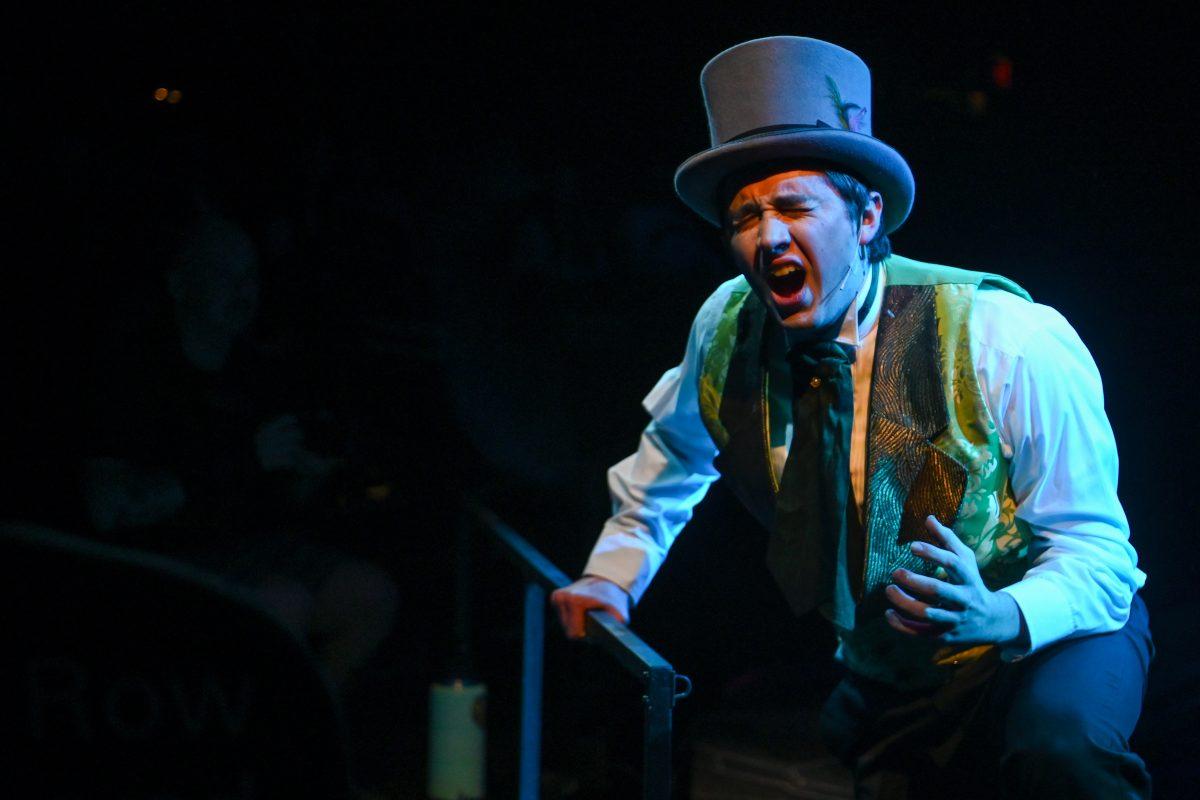In its opening montage, Edge of Tomorrow seems like a rehashing of Guillermo del Toro’s Pacific Rim. Meteors come to Earth, aliens invade, the world is at war and humanity’s response is of course bigger and better weapons. I also saw both movies in the same theater, so you can imagine how I felt a little déjà vu.
Fortunately, the opening scene and the trailer are merely devices used to fool audiences into thinking that this is a movie designed for the mindless, big bang, shoot ‘em up crowd. In an age where the term science fiction film has been reduced to space battles and headache inducing displays of CGI action, Edge of Tomorrow proves to be truly deserving of this title.
Tom Cruise plays Major William Cage, a role which manages to remind viewers of a number of characters whom the Hollywood icon has portrayed over the years. Did the screenwriters and director Doug Liman have Cruise in mind from the beginning? I would not be surprised if they did.
Cage is ordered by British General Brigham (Brendan Gleeson) to fight alongside his troops, right as the military is on the verge of an invasion of France. With no prior combat training, Cage is more like Jerry Maguire at first, seeking the most comfortable lifestyle possible. It takes time before Cruise turns him into the Ethan Hunt type persona which moviegoers are more familiar with.
Needless to say, Cage is annihilated by his alien opponents moments after the battle unfolds. This point in the film is where the science fiction element comes into play. Cage awakens the day before the battle. Sound like Groundhog Day? That is what everyone is comparing it to.
Unlike the iconic Harold Ramis comedy, Edge of Tomorrow uses this aspect of a bewildering time fixation to build upon a larger narrative. Here, it will take more than big guns and robots for Tom Cruise to save mankind, yet again.
After living the same day over and over again, and experiencing a brutal death over and over again, Cage finally meets someone who has gone through the same thing he has. This is Rita Vrataski (Emily Blunt), a tough soldier Cage encounters on the battlefield. With the help of scientist Dr. Carter (Noah Taylor), who is deemed a crack-head by his superiors for his outlandish theories, Cage and Vrataski must locate and destroy the source of this fractured timeline and end the war, before it’s too late.
It is a common rule in screenwriting to avoid making the log line of a movie “this movie meets this movie.” At first, the only way I thought I could describe Edge of Tomorrow was Groundhog Day meets The Bourne Identity meets Halo. And it is no coincidence that Doug Liman is also the director of the aforementioned Bourne film.
Yet as the movie progresses, particularly with the multiple layers of its plot, it proves to contradict this description. While it no doubt presents itself in a way that is similar to these movies and many others, the way it meshes those familiar elements together effectively is what makes it original. Liman and his screenwriters play on audience expectations and there is a wealth of cleverness embedded into the structure and presentation of the story.
It is an accomplishment when a film feels more like an experience than a movie. There are only two movies I’ve seen this year that are deserving of that description: Edge of Tomorrow and Wes Anderson’s The Grand Budapest Hotel. At times I was exhausted watching this film, but in a good way. It meant that Liman managed to suck me into this story world and journey with its characters. The more the narrative progressed, the more engaged I was.
Much like the first Iron Man has been described as a metaphor for the career of its star Robert Downey Jr., Edge of Tomorrow is likewise being called by critics a metaphor for Cruise’s. Richard Roeper said in his review, “You can’t kill this guy, he’ll just keep coming!” Matt Zoller Seitz from rogerebert.com described the film as “being about the predicament of a real actor trying to stay relevant in a Hollywood universe that’s addicted to computer-generated monsters, robots and explosions.”
Despite strong performances from Cruise and Blunt and an overall well-structured narrative, there is still an excess of sci-fi mumbo jumbo in this movie. While I did enjoy the ending, I’m still not sure I can believe it. You’ll understand when you see it.
Then again, even Spielberg’s Minority Report, another blockbuster with Cruise in the lead role and one of my favorite science fiction thrillers, suffers from this problem. Fortunately, Liman gives viewers enough reasons to like this film to the point where its flaws are easier to overlook.
It should also be noted that a defining aspect of this film is the top-notch cinematography by Dion Beebe. The imagery he displays is what makes the battle scenes so intense and engaging.
There is, no doubt, a string of mindless blockbusters coming at us in the next few months. So before Michael Bay gives moviegoers migraines with Transformers: Age of Extinction and the Teenage Mutant Ninja Turtles reboot, give Edge of Tomorrow a shot if you’re looking for a more memorable cinematic experience.







